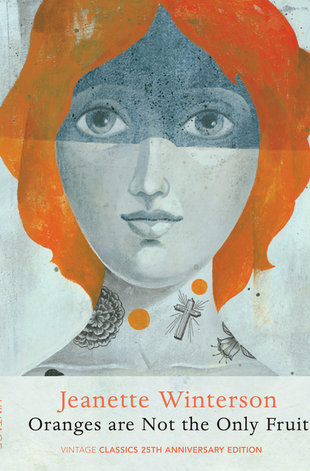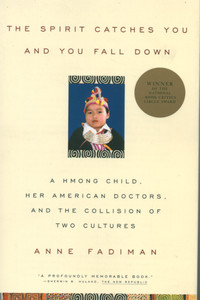A new book, The East, the West, and Sex: A History of Erotic Encounters, has hit the shelves. The author Richard Bernstein, a writer for the International Herald Tribune, explores the various attractions and abuses within relationships of Eastern and Western partners, particularly White men and Asian women. I have not read the book, but I wish him all the best at an hopefully honest attempt to crack open and sort through a can of worms that probably also contains botulism. This a topic that I anticipate will elicit visceral reviews and responses.
The cover features a detail from the famous Une Odalisque, and the image certainly packages up several issues that make discussions like Bernstein's so fraught. The nude Ingres created for the 1819 Paris Salon falls into a category of images art historians label as "Orientalist." Paintings like this, ostensibly a rendering of a harem girl, latched onto exotic and salacious aspects of Near Eastern culture to serve up titillation to Western viewers, whether factual or not. These compositions had a place alongside travelogues and a larger oeuvre of depictions that created a stereotypical East in Western minds, full of exotic morals and behaviors. This was the Orient of harems and geishas. Numerous scholars, following Edward Said's post-colonial treatise Orientalism, have shown how this caricature of a sexually available, and morally backward, East gave justification to colonists who saw the territory as open to military and economic penetration. Such attitudes of the East as populated by people "not like us" abetted the dehumanizing absuses of colonialism. Unfortunately, some present discussions of foreign relations have really not moved too far along. A book about sexual encounters between East and West would examine this dysfunctional relationship at its most personal levels.
For a good perspective on the present day, check out Laura Miller's cogent review of Bernstein for Salon. She acknowledges that both men and women can consciously choose a foreign-born partner but remains aware that prevailing circumstances usually don't favor Eastern women. Most importantly, she points out the central fallacy in the myth that Western men treat their chosen partners better than Eastern men do. Such allegedly superior mores largely derive from the ongoing struggles of Western women for greater respect and equality, and men who head East for female companionship could be considered runaways from such moral constraints. Her critique helps to explain the perception of injustice that often arises when people opt out of the supposed pool of acceptable partners. I heard one vivacious white woman in Singapore sum up her frustration with the local dating scene by declaring that no white men asked her out because they were all looking for "a taste of Asia."
However strongly such beliefs are held, some evidence exists to suggest that the predilection of white men for East Asian women constitutes more of a niggling anecdote than an actual phenomenon. Social experiments by Ray Fishman suggested that white men overall (in America) did not exhibit any racial preferences in their attractions to the opposite sex. Plus, new patterns of migration have greatly diminished the specter of colonialism. For example, how should sexual interactions involving well integrated children of immigrants or expatriates be classified? These couples might fit an White + Asian phenotype, but does this distinction become irrelevant when both partners share in the cultural principles of the adopted society? My experience has included multiple examples of mixed couples, including white chaps with Asian women, who enjoy relationships based on mutual attraction and affection. Awful stereotypes, like "lecherous, overweight Western sex tourist" or "gold digging Asian," surely represent an equally narrow and dangerous way to perceive the world. It's the plank in my own eye that I should worry about most. Another reminder to remain patient and generous when bedding down in another land.
Update (1 July 2009): Johann Hari has added a review of Bernstein for Slate, and ballet dancer/author Toni Bentley read the book for the New York Times. Also the vivacious white woman mentioned earlier had a second date with a nice chap last week.
The cover features a detail from the famous Une Odalisque, and the image certainly packages up several issues that make discussions like Bernstein's so fraught. The nude Ingres created for the 1819 Paris Salon falls into a category of images art historians label as "Orientalist." Paintings like this, ostensibly a rendering of a harem girl, latched onto exotic and salacious aspects of Near Eastern culture to serve up titillation to Western viewers, whether factual or not. These compositions had a place alongside travelogues and a larger oeuvre of depictions that created a stereotypical East in Western minds, full of exotic morals and behaviors. This was the Orient of harems and geishas. Numerous scholars, following Edward Said's post-colonial treatise Orientalism, have shown how this caricature of a sexually available, and morally backward, East gave justification to colonists who saw the territory as open to military and economic penetration. Such attitudes of the East as populated by people "not like us" abetted the dehumanizing absuses of colonialism. Unfortunately, some present discussions of foreign relations have really not moved too far along. A book about sexual encounters between East and West would examine this dysfunctional relationship at its most personal levels.
For a good perspective on the present day, check out Laura Miller's cogent review of Bernstein for Salon. She acknowledges that both men and women can consciously choose a foreign-born partner but remains aware that prevailing circumstances usually don't favor Eastern women. Most importantly, she points out the central fallacy in the myth that Western men treat their chosen partners better than Eastern men do. Such allegedly superior mores largely derive from the ongoing struggles of Western women for greater respect and equality, and men who head East for female companionship could be considered runaways from such moral constraints. Her critique helps to explain the perception of injustice that often arises when people opt out of the supposed pool of acceptable partners. I heard one vivacious white woman in Singapore sum up her frustration with the local dating scene by declaring that no white men asked her out because they were all looking for "a taste of Asia."
However strongly such beliefs are held, some evidence exists to suggest that the predilection of white men for East Asian women constitutes more of a niggling anecdote than an actual phenomenon. Social experiments by Ray Fishman suggested that white men overall (in America) did not exhibit any racial preferences in their attractions to the opposite sex. Plus, new patterns of migration have greatly diminished the specter of colonialism. For example, how should sexual interactions involving well integrated children of immigrants or expatriates be classified? These couples might fit an White + Asian phenotype, but does this distinction become irrelevant when both partners share in the cultural principles of the adopted society? My experience has included multiple examples of mixed couples, including white chaps with Asian women, who enjoy relationships based on mutual attraction and affection. Awful stereotypes, like "lecherous, overweight Western sex tourist" or "gold digging Asian," surely represent an equally narrow and dangerous way to perceive the world. It's the plank in my own eye that I should worry about most. Another reminder to remain patient and generous when bedding down in another land.
Update (1 July 2009): Johann Hari has added a review of Bernstein for Slate, and ballet dancer/author Toni Bentley read the book for the New York Times. Also the vivacious white woman mentioned earlier had a second date with a nice chap last week.








.jpg)
No comments:
Post a Comment